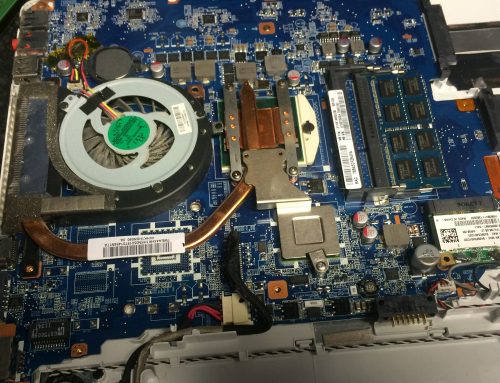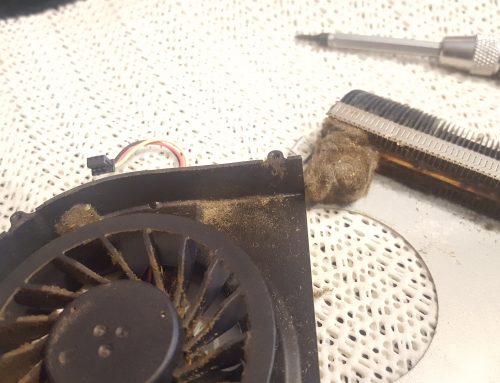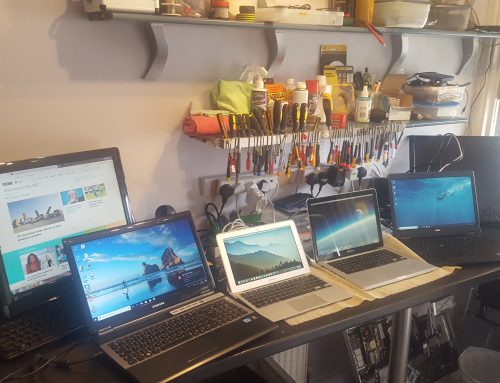Taking care of your laptop’s battery
Does it seem like no matter what you do, your computer is always out of battery power? It might be time to replace the battery. Every battery has a designed capacity—basically the amount of charge that it’s designed to hold. Over time batteries lose their ability to hold a charge. This means that even though you’re fully charging your battery, the actual amount of power that the battery can hold is going down. Some of the telltale signs that your battery is going bad are shorter use times, and subsequently, shorter times to recharge. If you notice the amount of time you can spend unplugged is going down, then chances are your battery has lost much of its ability to hold a charge. Another sign that your battery might be on the wane is that it takes less time to recharge. A battery that’s going bad might also cause your computer to turn off or hibernate unexpectedly, even if the battery meter displays ample capacity remaining (70 or 80 percent).
Fortunately, Windows can help you know when your battery is unable to hold a full charge. When your battery gets down to 40 percent of its original capacity (that is, it can only hold 40 percent or less of its designed capacity after it has been charged), you’ll see a notification via the battery meter icon that your battery might be going bad. This notification is new in Windows 7—earlier versions of Windows can’t notify you when your battery is going bad. If you don’t want to receive this notification, you can turn it off by clearing the check box on the battery meter.
Many batteries will show signs of problems well before reaching 40 percent of their original capacity. Also, many computer manufacturers have programs that you can use to measure the performance of your battery. These programs might be more sensitive to battery problems and should be used first to check the condition of your computer’s battery.
Some computer manufacturers report the designed capacity of their batteries to be the level of the last full charge, so it’s possible that your battery might be below the warning threshold without giving you any warning. If your computer continues to run out of battery too quickly, but your battery meter shows that it’s fully charging, it might be time to consider replacing your battery.
Check with your computer manufacturer for information about replacing your battery. Using the battery meter to monitor power consumption The battery meter is a handy tool located in the notification area of the Windows taskbar that makes it easy for you to keep an eye your computer’s power consumption. The battery meter icon indicates whether your laptop is plugged in.
When you point to the battery meter, you can see the percentage of battery charge remaining as well as an estimate of how much time you have until you’ll need to plug your computer in. When you click the battery meter icon, you can get more information—like which power plan you’re using and, if you have more than one battery, how much charge is left in your second battery.
You can also change power plans and access additional settings for managing more power options.  Using power plans to save your battery One of the easiest ways to save your battery without affecting the performance of your computer is to use one of the built-in power plans that come with Windows. Power plans are basically collections of hardware and software settings that control how your computer uses power. There are two power plans that come with Windows that are useful for laptops: Balanced. This is the plan that most laptops use by default. It offers full performance and display brightness when you need it and saves power during periods of inactivity. Power saver. This plan can help you get the most from a single battery charge. It saves power by reducing system performance and screen brightness. In addition to the power plans that come with Windows, your computer manufacturer might offer additional plans. You can also create your own power plan, or customize the settings for one of the existing plans. For more information, see Change, create, or delete a power plan (scheme). It’s also important to take care of your battery to make sure you get the most life out of it.
Using power plans to save your battery One of the easiest ways to save your battery without affecting the performance of your computer is to use one of the built-in power plans that come with Windows. Power plans are basically collections of hardware and software settings that control how your computer uses power. There are two power plans that come with Windows that are useful for laptops: Balanced. This is the plan that most laptops use by default. It offers full performance and display brightness when you need it and saves power during periods of inactivity. Power saver. This plan can help you get the most from a single battery charge. It saves power by reducing system performance and screen brightness. In addition to the power plans that come with Windows, your computer manufacturer might offer additional plans. You can also create your own power plan, or customize the settings for one of the existing plans. For more information, see Change, create, or delete a power plan (scheme). It’s also important to take care of your battery to make sure you get the most life out of it.
Make sure you’re following the manufacturer’s instructions for charging and maintaining your battery. Only use a charger and power cord supplied by the manufacturer. Don’t let your battery get too hot (or too cold). A hot battery is a sign of trouble and usually means that your battery isn’t working properly. You should stop using it right away. Also, make sure that your battery isn’t exposed to extreme temperatures. Batteries are designed to work best at room temperatures. Avoid using (or even storing) batteries in extreme temperature conditions. Use your battery to keep it fresh. Don’t keep your computer plugged in all the time. It’s a good idea to discharge and then recharge your laptop battery about once a month.



